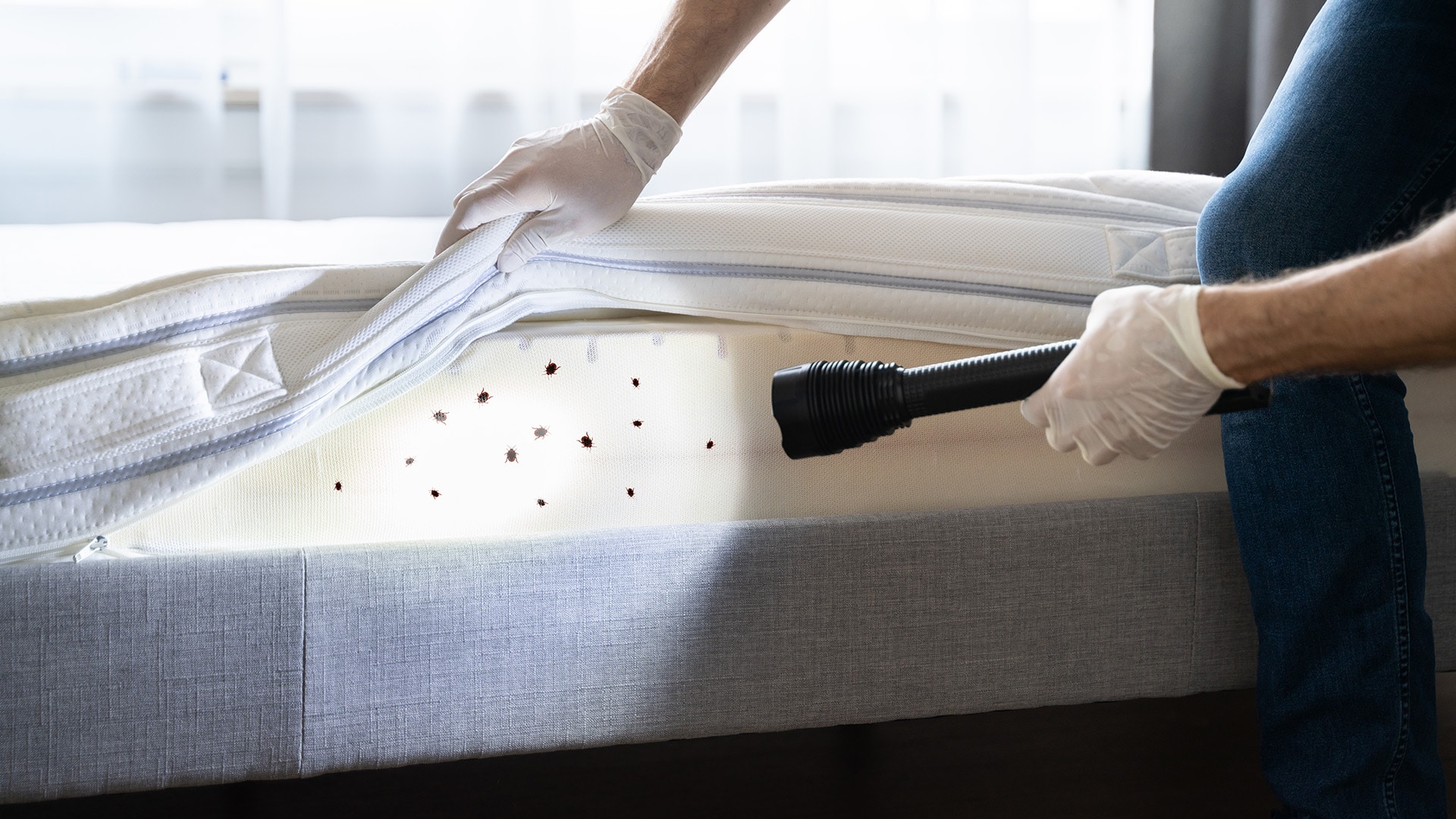From misinformation about their biting/stinging behavior to their sleep patterns, insects are largely misunderstood, creatures.
Bed bugs top the list of insects we don’t know much about; therefore, we don’t completely understand how they behave, how they get into our homes, or how to get rid of them.
We’re here to help. Let’s debunk some common bed bug myths.
1. They only live in dirty places.
One of the most persistent myths about bed bugs is that they only inhabit dirty or cluttered spaces. The fact is, bedbugs can find their way into any type of dwelling.
A 2018 National Pest Management Association poll showed bed bugs were found in nursing homes (59 percent), schools and daycare centers (47 percent), offices (46 percent), college dorms (45 percent), hospitals (36 percent), and public transportation (19 percent). The highest rate (91 percent) was in single-family homes. Bed bugs can inhabit any kind of home, but minimizing clutter in a home reduces potential hiding places for these pests.
2. Bed bugs only live in mattresses/bedding.
Despite their name, “bed bugs” are not just found in beds. Bed bug infestations can be found in clothing, furniture, and carpeting, as well as bedding or mattresses. People have also found them in suitcases after returning home from a trip, so it’s important to put all clothing in the washing machine when you get home. Bed bugs prefer small, enclosed spaces like pants pockets and corners of suitcases, so check your bags and everything in them thoroughly.
3. Bed bugs carry/transmit diseases.
Rest assured, these insects do not cause or spread disease; however, bed bug bites can itch. Excessive scratching could cause a secondary infection or other reaction.
4. You cannot see bed bugs.
Young bed bugs are roughly the size of a poppy seed; adult bed bugs, about the size of an apple seed. They are difficult to see in great detail with the naked eye, but they are definitely visible.
5. They only bite at night.
Bed bugs are nocturnal but can bite at any time. Another common myth says bedbugs are always feeding. Bed bugs can actually go for weeks or months without eating. It can take a young bed bug weeks to digest a blood meal.
While it’s true that bed bugs are more of a problem in densely-populated urban areas, where apartment-style living is more common, people living in more rural areas can get bedbugs in their homes, too.
What do I do if I see bed bugs?
Adult bed bugs are approximately ¼ long. They are visible to the human eye but prefer to hide out in cracks and crevices in walls and furniture. Bat bugs, fleas, and spider beetles also look like bed bugs.
Having bed bugs in your home is not a reflection of your housekeeping routine or the condition of your home. If you see them, don’t beat yourself up. Contact your landlord if you rent your home. If you own your home, contact a trusted pest control management professional.
How do I get rid of them?
First, determine whether you actually have bed bugs. If you see little black bugs around your house but aren’t sure what they are, call a pest control professional for a consultation.
Don’t attempt to get rid of them with garden pesticides. Outdoor pesticides are strong and could make you or your family members sick.
Working with a pest control management professional is strongly recommended; however, if you want to try a DIY method, read product labels carefully. Many pesticides are not intended to be used indoors.
Wash your clothing and bedding in hot water immediately. This should kill any lingering bed bugs. Furniture, carpeting, and mattresses can be treated with a special spray intended for bedbugs. Just throwing any of these items away can spread the bugs.
Heat treatments and “bug bombs” are some of the most common removal methods. It may take more than one treatment to rid your home of the bedbugs completely.
Here is an interesting fact—bed bugs are attracted to the carbon dioxide emitted by humans. CO2 has been used as an attractant in traps, and pest control professionals use high levels of CO2 to eliminate bed bugs, rather than harmful pesticides or other methods.
Due to a resurgence in the bed bug population and countless infestations over the last decade, new control and mitigation methods have been developed. A Penn State University scientist developed a new biopesticide that is expected to be at the forefront of bed bug control. Although bed bugs will not carry disease or damage your home or property, they do bite, and you certainly don’t want a bug infestation in your home.
Always contact a pest control professional for any large-scale insect infestation in your home rather than try to tackle the problem on your own. A trained technician can assess and diagnose the problem and determine the best way to get rid of invasive pests.




























